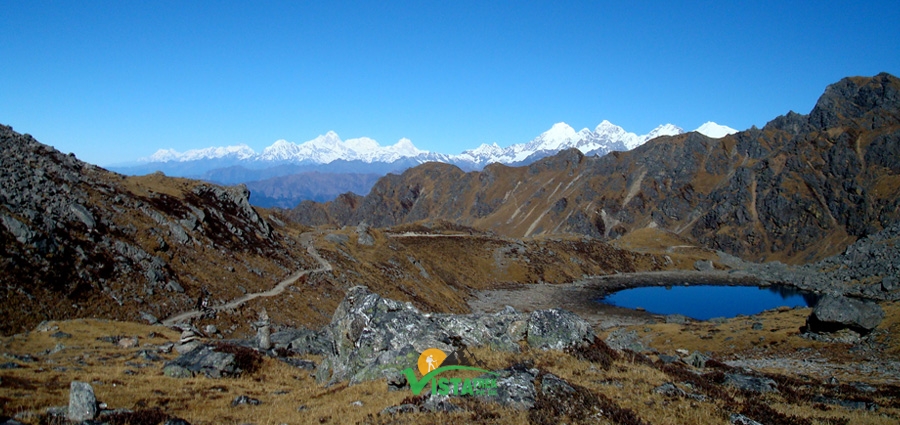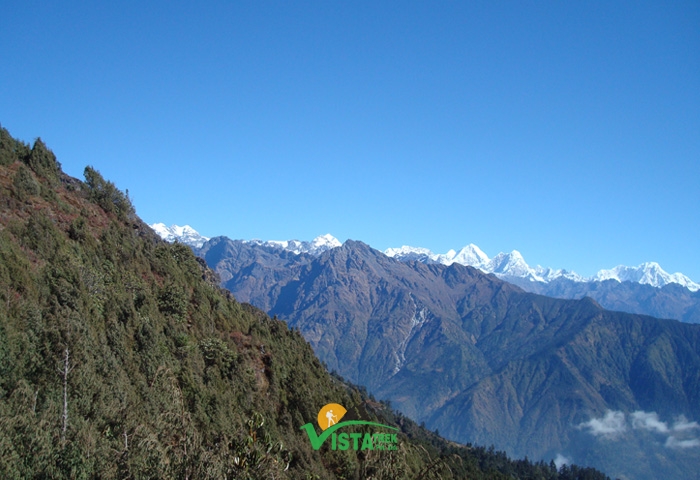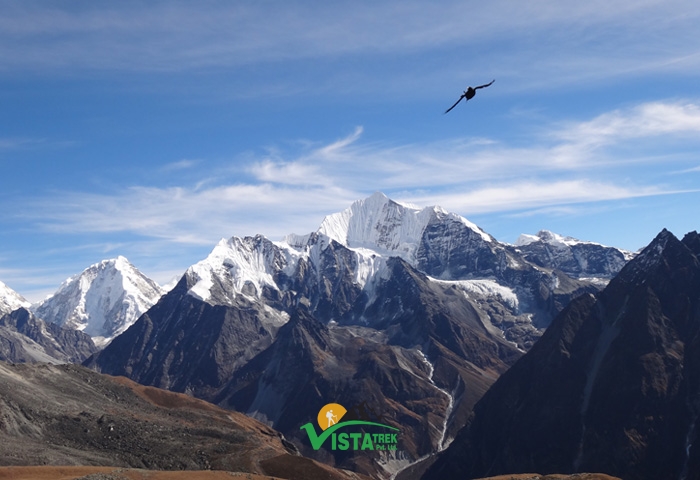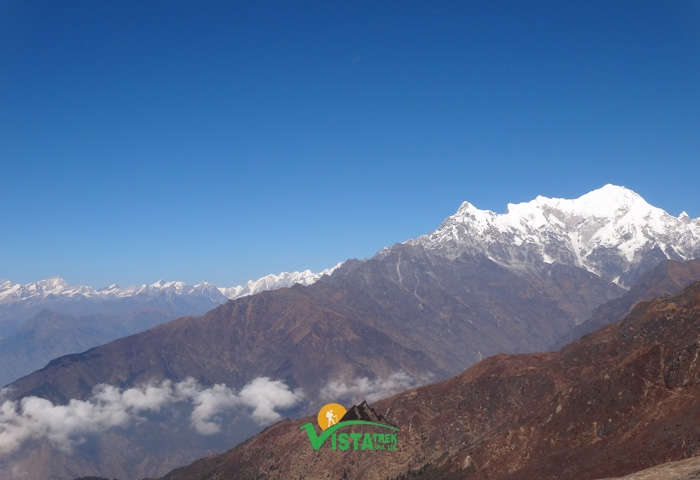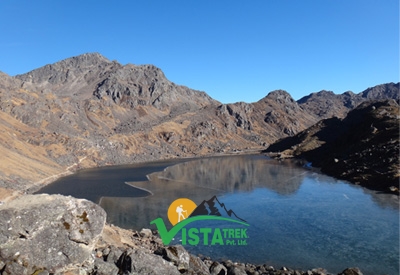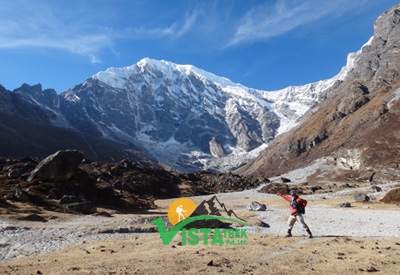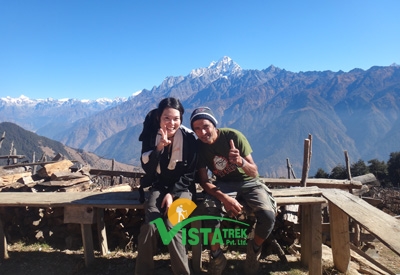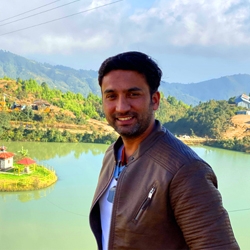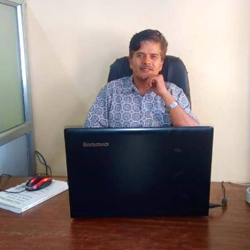Trip Facts
- Duration 9 Days
- Start FromKathmandu
- Group Size1-10 Pax
- End FromKathmandu
- Trip GradeEasy to Moderate
- Max Height 3600 m
- AccommodationTea House
Best Season
Sept – Nov, March to May
Trip Highlights
- Trek to Thadepatti (3,600 metres)
- Kathmandu as the trailhead
- Three villages – Chisapani, Thadepatti and Shermathang – presenting magnificent views of all or some of these majestic elevations: Mt Annapurna, Mt Manaslu, Ganesh Himal, Langtang Himal, Dorje Lakpa as well as Mt Gaurishanker
- Passes through settlements that highlight mainly the Tamang and Sherpa cultures
- Spreads accross two national parks, Shivapuri and Langtang,
Trip Overview
Helambu Trekking is a relatively unknown and crowd-free trek despite being very close to Kathmandu. The traditional Hyolmo culture of Tamang People, Majestic view of Jugal Himalayan range, Green rhododendron and bamboo forest along with several natural waterfalls, rivers, and valleys make this trek one of the perfect short treks to enjoy. People from this region looks like Tibetans since their origin are Tibetans. People’s culture, day to day farming life and old Buddhist monuments bring enthralling experience in Himalaya.
Helambu trek starts with an hour’s drive from Kathmandu to Sudarijal. Shivapuri national park is just in an hour’s walk distance, leading the trail to Chisapani Village. The trek then heads to Kutumsang village followed by Thadepati, Tarkeyghyang, Sermathang, finally ending the trip to Melamchi Pul Bazaar.
Trip Itinerary
- Upon arrival at Tribhuwan Intl Airport in Kathmandu, a representative from Vista Trek waiting, well in time, to receive you, shall welcome you to this land of the towering Himalayas. Once reaching your hotel in a car from the airport, all you need to do is check in and enjoy the refreshment served.
- We then visit the Vista Trek office for discussion on trekking, introduction to the guide and porter and settlement of dues if any. Since you often still have some time left for a walk around Thamel, you can do so if you please.
- After breakfast, a ride in a vehicle to the North-East for around half an hour from the hotel takes us to Sundarijal, our trailhead. We start our walk through Shivapuri National Park and come to Mulkharka, a settlement on the way, in about 45 minutes. The next three hours or so brings us all to Chisapani. This settlement generously showcases the Himalayas to its North: Mt Annapurna, Mt Manaslu, Ganesh Himal, Langtang Himal, Dorje Lakpa as well as Mt Gaurishanker.
- We spend the night here.
- After breakfast, we start our trek to Gulfu Bhanjyang. The route is a steep descent, with green pastures to rest the legs here and there along the way, for roughly an hour to Party Bhanjyjang, one more settlement our trail passes through. The uphill, slightly less in intensity now, lasts for another forty minutes or so until Firfiré. Once atop Firfiré, the refreshing wind blowing at a speed just right for almost everyone and a view that seems to represent the whole Region at a glance are certain to force a break of at least half an hour. After this break, we walk through mostly cultivated land with one or two houses here and there for about one hour to Gulfu Bhanjyang, our stopover for lunch.
- After lunch, as we walk towards our destination on a route, a mix of flats and uphills, the vegetation gradually gets thinner, with more shrubs and grasses than trees. Kutumsang, with relatively comfortable hotels and a Chaitya, is a village very similar to Gulfu Bhanjyang with one major difference. While Kutumsang has forests on two directions, South and North, we can see the same only to the North in Gulf Bhanijyang.where we spend the night today.
- We spend the night here.
- After breakfast, we leave for Magengoth. This around three-hour walk is a combination of flats and uphills changing around every quarter of an hour. While many find the flats refreshingly comfortable, they find the ascents demanding on the body. As we traverse through this forest, somewhere in the middle, awaits two tea huts at some distance from one another. With the main purpose of selling tea and whatever goes with it, the one first often seems to attract many en route. Magengoth, with its original purpose as a place for rearing domestic mammals and cultivation, now has teahouses ready to serve any traveler and a security post with a view to protecting the Conservation Area, increasingly serving the purpose of the latter than the one of the former. This is where we have our lunch.
- We walk the next hour and a half to Thadepatti on a path similar to the one before.Once in Thadepatti, the view from atop the ridge makes almost everyone pull their cameras out. On a clear morning, the glistening of Mt Gaurishanker and Dorje Lakpa along with numerous other peaks is a treat to watch.
- We spend the night here.
- Today our trek involves a walk downhill for approximately two hours to Melumchi Village. Through a forest populated mainly with rhododendron and oak trees and we arrive in Melumchi Village, on the slopes of a hill facing East, with Melumchi River in front, with the population consisting of mainly the Sherpas along with a monastery signifying their belief. This is where we have our lunch.
- When leaving this village, a short walk of about fifteen minutes brings us to a small teahouse by the riverside, which looks very inviting for spending some time before moving on. The next to follow, after crossing the river through mostly irrigated land, is a two-and-half-hour uphill, steep and exhausting for about an hour and a half and gradual for some 45 minutes or so altogether. On the slope of a hill facing Sout-West, Trakéghyang, a village with a pre-historic monastery, is a place where people seem to welcome everyone to their village as a whole rather than to a particular hotel.
- We spend the night here.
- After breakfast, we start our walk to Kakani I. The almost flat route all the way walks us with a forest to the left throughout, with cultivated land to the right more often than not and with the forest on both the sides at places. Kakani, with a Gompa and some Stupas, is a relatively dense settlement in comparison. We stop for lunch here.
- In about just five minutes, the forest starts once again after leaving the village. The route with a few uphills and downhills is otherwise flat all the way to Shermathang for the next two and a half hours. Shermathang faces West on the slopes of a hill and is a relatively big village. The village comes with a vantage point from where the view is spectacular: Mt Gaurishanker and Dorje Lakpa along with many other peaks to the North and the Indrawoti River carving its way through the landscape that also involves cultivation.
- We spend the night here.
- After breakfast, we begin walking to Kakani II. After a twenty-minute walk on a flat trail, the next twenty is a mix of flats and downhills. The next to follow for about an hour and a half is a gradual and comfortable descent throughout to Kakani II, with sparsely populated homes and a few teahouses. This is where we stop for lunch.
- After lunch, our journey through cultivated land is on a relatively comfortable downhill for around an hour and a half. Melumchi Pool Bazaar starts right after we cross the Melumchi Bridge. It takes further twenty minutes through the bazaar for us to reach our hotel for the night. In spring, the portion of the river under the bridge is inviting for those wishing a swim.
- After breakfast, we return to Kathmandu in about five hours on a local bus, following the Indrawoti River for tentatively an hour and a half and the rest on hilly roads.
- In the evening, please allow us the pleasure of your company during the fare-well dinner organized by Vista Trek.
- If you have a morning flight, we leave for Tribhuwan Intl Airport early morning in a car arranged by the office.
- If your flight is in the late afternoon or evening, only your WILL shall dictate your involvemient or indulgence as you may please before leaving for Tribhuwan Intl Airport in a vehicle.
Cost Includes
- Pick up and transfer by car from Airport-Hotel-Airport.
- 2 nights standard hotel accommodation in Kathmandu.
- Breakfast, lunch and dinner during the trek.
- Local lodges accommodation during the trek.
- Government licensed guide and porter ( including their food, salary, accommodation, equipment, medicine & insurance).
- All local transportation.
- All necessary permits and entry fees.
- All government taxes.
- Medical kit
- Rescue assistance
- Necessary equipment (sleeping bags, down jackets if needed).
- Our service charge.
Cost Excludes
- Meals in Kathmandu.
- International airfare.
- Nepal entry visa fee ($30).
- Your travel insurance (should include your medical and rescue).
- Any personal expenses hot shower and battery charging fees
- Anykind of hot and cold drinks.
- Staff & driver tipping.
Trip Map
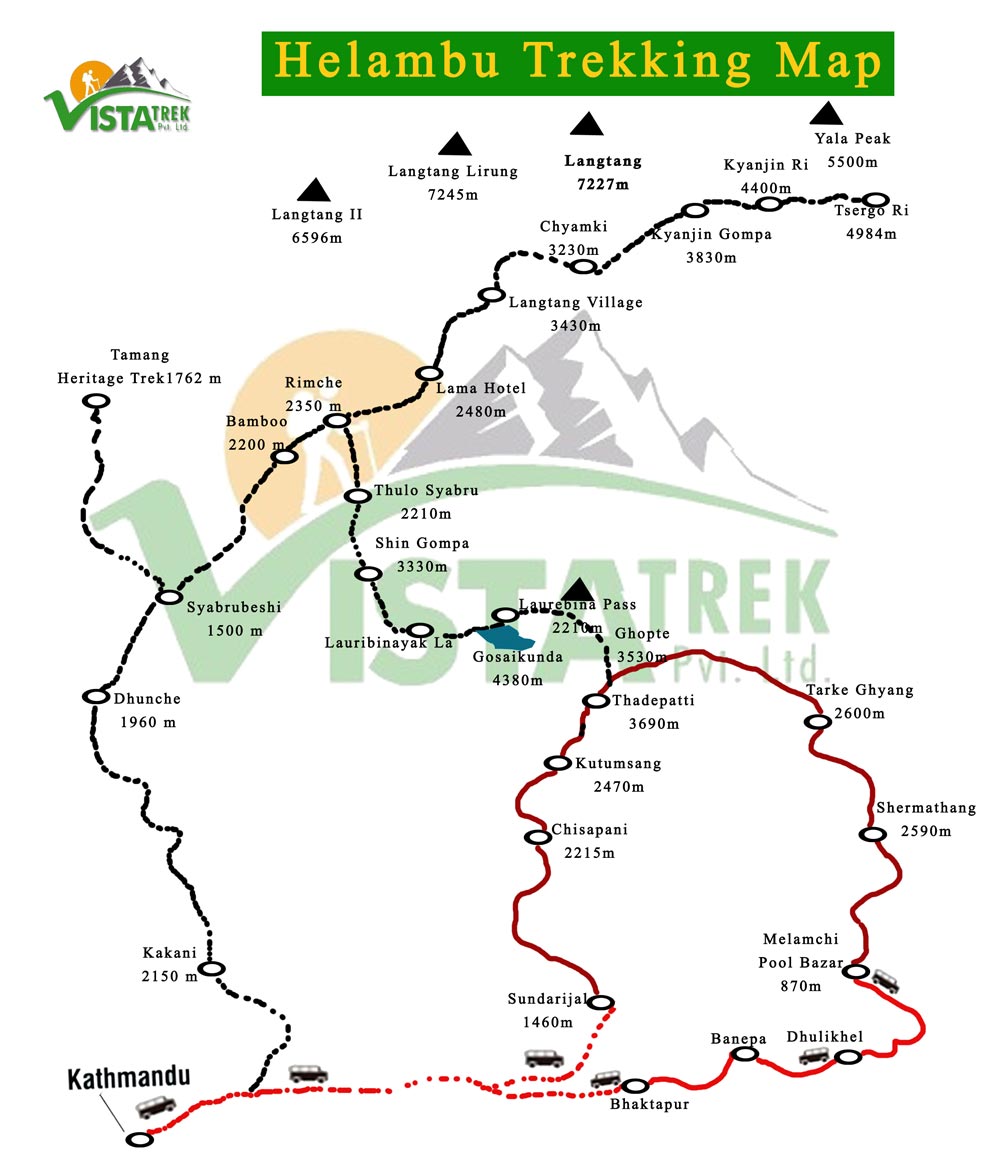
Useful Info
About Accommodation.
In Kathmandu, we will accommodate you at Hotel Himalayan Traveller’s Inn, and In Pokhara at Hotel Trekkers’ Inn. Local lodges accommodation provided during the trek on twin sharing basis. Hotel in Kathmandu and in Pokhara comes with private bathroom , however in mountain, toilet and shower will be on sharing basis. In the busy months, (October/November & April/ May) you may have to share the room with other traveler as some villages have limited number of local lodges .
About Meal
You can enjoy typical Nepali food as well as continental , Italian, Indian and Tibetan. Dinner and breakfast serve at the teahouse where we stay and lunch will be served on the way to next destination. In Kathmandu and in Pokhara, only breakfast is provided. If you are a vegetarian or vegan, no worries, Nepal is such a easy place to get several vegetarian options.
About Staff:
A Guide and a porter assist you from Kathmandu to Kathmandu. In a group with more than 8 clients, 2 guide will be provided. A porter provided for 2 trekkers, and carries between 15 to 20 K.G.
About Equipments
Following Equipment list is recommended to bring for the trek.
Down Sleeping Bag, Down Jacket, Long sleeved shirt, Jumper or fleecy jacket, T – shirts, Trekking shoes or boots, Comfy shoes for around the camp, thick and warm woolen socks, Light cotton socks , A day bag to carry your valuable, Sun hat, Woolen hat, Gloves, rain coat, Sun block, lip balm , Goggles or sunglasses, Long underwear, Thermal wear, Nylon windbreaker, Nylon wind pants, Water bottle, Sewing kit, Medical & first aid kit, Flash light, Batteries and bulbs, Swiss army knife, Towel and toiletries etc. Please kindly check our Equipment list for complete details.
Temperature
Temperature in Helambu vary as per the elevation and season. Spring (March to May) and Autumn (September to December) is quite warm that you can walk with t-shirts and shorts during day. It can be hot and humid in starting days. Above 3000, day time temperature is around 5-10 °C and night time temperature is below 0 °C. is cold through out a year and night time temperature can reach up to–10 °C in winter. There are no heating system inside the room in guest houses, therefore it is important to prepare warm clothes and sleeping bag for the trek.
Physical Fitness and experience
Helambu Trek is a moderate which is fit for those who has the ability to walk 5-6 hours ups and down in a day carrying own day bag. Some days are even longer with 7- 8 hours of walking. Helambu trek is high altitude trek which demands more physical fitness,however if you are strongly determined and have excellent health and average physical fitness can complete this trek. Few weeks prior to the trip, doing some physical exercise is better . No technical skill is needed however past experience also helps . If you are taking medicine for heart, lung or for blood diseases, please kindly consult your doctor and inform to Vista Trek P. Ltd.
About Insurance,
You have to obtain the travel insurance which should cover emergency evacuation and medical expenses. Some Insurance policy’s cover only up to 4000 meter, so please kindly confirm with the insurance company before you purchase it.
About Seasons
Spring (March to May) and Autumn (September to November) are the best months for Helambu Trek. You can do it in winter (December to February )if you are used to with extreme cold temperature.
About Bus Drive
Highway in Nepal are safe, however sometime transport can be halted due to landslide , strike or by political issues. In such case trip itinerary will be affected. Thus, we would like to request you to add few days extra in Kathmandu. If you complete your trip smoothly, then you can enjoy your time with other activities like sightseeing, White water rafting. Jungle activities or more.
Please cheque our FAQs for various issues of the trek.


 +977 9841322985
+977 9841322985 
